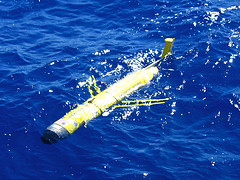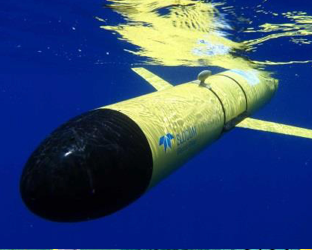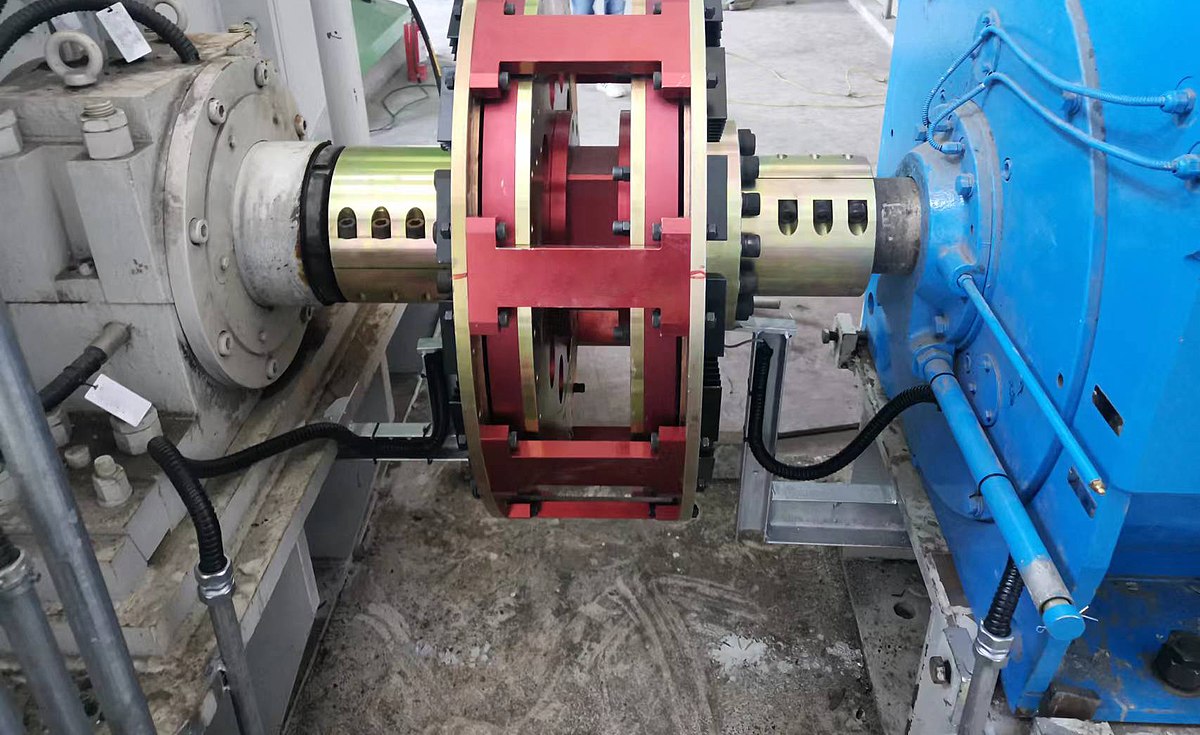An airborne glider requires sufficient airflow through winds or its motion to float up in the air, yet this is not such for an underwater glider, the buoyancy lifts the vehicle, which naturally floats in and on water. An underwater glider simply uses its buoyancy to adjust its downward or upward motion, using wings to generate backward-forward motion.
Additionally light weight folding propellers can be attached, usually driven by magnetic coupling,to reduce complexity of shafting tube, and frictional losses due to the water-tight bearings.
Removing energy consuming propulsion, and simply adjusting buoyancy through alternative methods, a glider can stay on mission up to months, dodge streams and weather conditions by sinking, can afloat to communicate and to correct its location, usually is driven around the sea by using Inertial GPS and possibly magnetic corrections.
Currently staying on development stage driven by scientific community, gliders are soon expected to be in service of military and national defense.
Since they lack moving parts, gliders are best found to measure acoustics and backscatters, and stores data up to an interval which later is delivered by any preferred communication to powerful servers for analysis. The collective and chaotic distribution of gliders also helps for glitch free measurements.

 en.wikipedia.org
en.wikipedia.org

 ioos.noaa.gov
ioos.noaa.gov
An image depicting (source) typical components of an underwater glider, which ballast pump is used to adjust buoyancy by filling with air /oil, sliding mass is used to adjust pitch, thus direction of the motion and rudder to maneuver, the propeller is intended to be used rarely, when needed.

diagram showing typical motion of the glider; advanced controller can be further implemented to operate vehicle at fixed depth using propeller and wings in combination.


 oregoncoastdailynews.com
oregoncoastdailynews.com
Additionally light weight folding propellers can be attached, usually driven by magnetic coupling,to reduce complexity of shafting tube, and frictional losses due to the water-tight bearings.
Removing energy consuming propulsion, and simply adjusting buoyancy through alternative methods, a glider can stay on mission up to months, dodge streams and weather conditions by sinking, can afloat to communicate and to correct its location, usually is driven around the sea by using Inertial GPS and possibly magnetic corrections.
Currently staying on development stage driven by scientific community, gliders are soon expected to be in service of military and national defense.
Since they lack moving parts, gliders are best found to measure acoustics and backscatters, and stores data up to an interval which later is delivered by any preferred communication to powerful servers for analysis. The collective and chaotic distribution of gliders also helps for glitch free measurements.

Underwater glider - Wikipedia

Underwater Gliders - The U.S. Integrated Ocean Observing System (IOOS)
Gliders are a unique and important observing system used to monitor and view a variety of subsurface missions.
Gliders are a unique and important observing system used to serve a variety of subsurface observing missions. Gliders can monitor water currents, temperature, tagged animals and conditions that reveal effects from storms, impacts on fisheries, and the quality of our water. This information creates a more complete picture of what is happening in the ocean, as well as trends scientists might be able to detect. These versatile vehicles collect information from deep water, as well as at the surface, at lower cost and less risk than ever before. As scientists deploy more gliders, they are revolutionizing how we observe our ocean. These robots propel us closer to that revolution.
The IOOS Program Office has taken an active interest in profiling glider observing platforms over the last few years as their role has begun to increase and show extensive value in subsurface water column observing. There is a lot of capacity in the IOOS Regional Associations and there has been interest from the community in looking for opportunities to collaborate and expand the impact and value of profiling gliders. As a result we have developed a glider network white paper, established a glider data assembly center and most recently established an Underwater Glider User Group (UG2). All of these activities are intended to expand the understanding and use of gliders. For more information and latest updates about the UG2, events and more please visit gliders.ioos.us.
Glider Applications Include
- Ecosystem dynamics monitoring
- MBARI dye tracking experiment
- Test performance of acoustic receivers and other sensors
- Fish stock mapping of Red Grouper and others
- Glider speed testing in the Gulf Stream
- Harmful Algal Bloom (HAB) mapping
- Listening to tagged fish, whale acoustics
- Sustained and targeted ocean observations for improving tropical cyclone intensity and hurricane seasonal forecasts
- Upper ocean monitoring of U.S. Caribbean/ Atlantic Economic Exclusion Zone (EEZ)
- Sampling around Station ALOHA and other long term stations
- Hydrographic mapping
- Ocean acidification sampling
- Climate monitoring
An image depicting (source) typical components of an underwater glider, which ballast pump is used to adjust buoyancy by filling with air /oil, sliding mass is used to adjust pitch, thus direction of the motion and rudder to maneuver, the propeller is intended to be used rarely, when needed.

diagram showing typical motion of the glider; advanced controller can be further implemented to operate vehicle at fixed depth using propeller and wings in combination.

Undersea Gliders Help Identify Ocean Sounds | Oregon Coast Daily News
The open ocean might appear to be a vast, mute void, but it is in fact a very noisy place. Below the surface, everything from grunt sculpins and rockfish to orcas and harbor porpoises emit sounds to communicate with one another. On the seafloor, urchins create a raspy din as they graze algae...
 oregoncoastdailynews.com
oregoncoastdailynews.com
Last edited:




